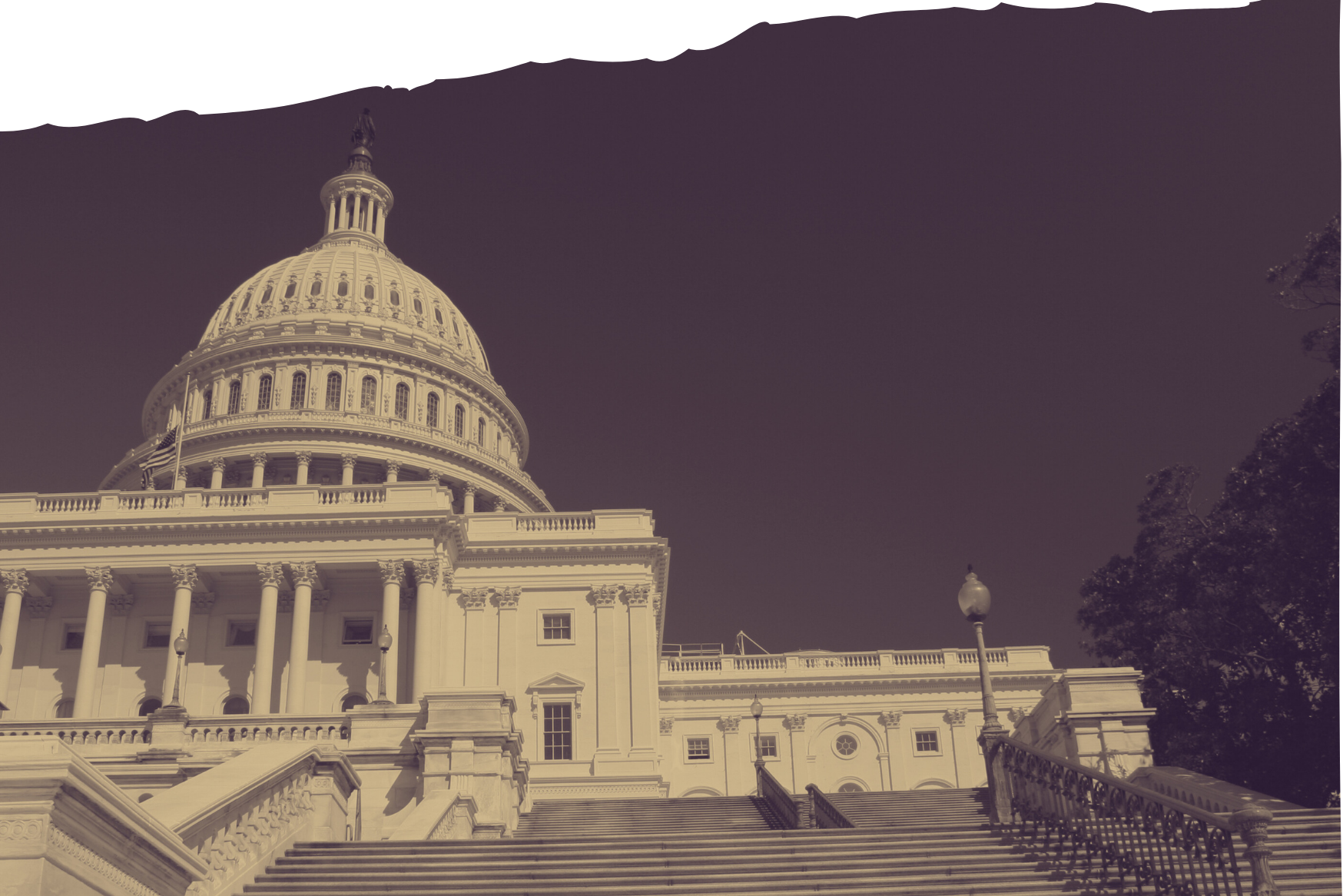What the “One Big Beautiful Bill Act” Means for Digital Learning in Higher Education
Published by: WCET | 7/22/2025
Tags: Financial Aid, Gainful Employment, Regulation, SAN, State Authorization Network, Student Success
Published by: WCET | 7/22/2025
Tags: Financial Aid, Gainful Employment, Regulation, SAN, State Authorization Network, Student Success
There is no shortage of news items about Congress recently passing the One Big Beautiful Bill Act (OBBBA). We know that the OBBBA was a massive budget bill that was passed using an expedited process, created by the Congressional Budget Act of 1974, called “reconciliation.” This process allows for the Senate to pass the legislation by a simple majority, rather than the more restrictive sixty-vote supermajority.

Additionally, this process avoids a potential Senate filibuster. This special process is used specifically for addressing legislation pertaining to taxes and spending. Reconciliation is subject to oversight by the Senate Parliamentarian, utilizing a Senate rule called the Byrd Rule. In short, the Byrd Rule provides that the Senate Parliamentarian can remove bill provisions that are deemed extraneous to the purpose of developing budget policy. For more information about the nuanced reconciliation process, you may wish to review The Reconciliation Process: Frequently Asked Questions provided by the Library of Congress.
While this budget-focused bill touches a lot of policy areas, it includes some notable changes that affect higher education. The original U.S. House of Representatives version of the bill included items with a more significant impact on higher education, dramatically affecting students and institutions. The Senate’s version of the bill mitigated the impact, as we will discuss. The House accepted the Senate’s changes, passed the bill, and sent the approved version of the bill to President Trump for his signature into law.
In this post, we will focus on four key areas from OBBBA that affect digital learning in higher education:
We’ll also share how institutions can adapt to better serve their students and effectively manage the changes.
OBBBA introduces significant changes to student loans, particularly for graduate and professional learners. The ultimate effect of these changes will be the limitation of federal options for students to have access to federal funds for their education. Here is what is changing and what has stayed the same.
Workforce Pell has been approved! For several years there has been bipartisan interest in what has also been called “Short Term Pell.” In previous years, political parties had disagreements on the structure of this grant program. The new law provides Pell eligibility for programs that are for 8-15 weeks in length as a way to provide additional opportunities for learners to obtain education and employment training.
The House bill would have permitted programs from non-accredited entities to be Pell eligible. However, that provision initially caused the Senate Parliamentarian to remove this Pell opportunity. The Senate removed the non-accredited entity provision, causing the revised provision to move forward.
Programs delivered via distance education are not excluded in the language of the OBBBA, a win for digital learning providers.
While we should expect a negotiated rulemaking and U.S. Department of Education guidance to help provide structure to implement the Workforce Pell plan, the OBBBA provides the following parameters:
A proposed increase in minimum credit hours for full-time student eligibility was removed. The House version of the bill would have increased the full-time student minimum hours for an academic year to 30 credit hours. This increase would have been a significant challenge for working learners, with a substantial impact on community college learners. The provision was removed, and the law maintains the full-time minimum hours at 24 credit hours per academic year.
A major shift in the OBBBA is that accountability measures tied to aid eligibility will apply to all programs, not just “gainful employment” programs. The OBBBA creates a new accountability measure for all programs for schools participating in federal financial aid. In short, programs could lose aid eligibility for undergraduate and graduate programs for failing metrics in two out of three years, tying aid eligibility to student earnings. Digital learning leaders need to prepare now. The law will link financial aid eligibility to graduate earnings, and the metrics will be applied regardless of modality. The effective date of this provision is July 1, 2026.
Federal statute, the Higher Education Act (HEA), directs that to be eligible for Title IV funds, certain non-degree programs at non-profit institutions and, with few exceptions, programs at for-profit institutions must lead to “gainful employment in a recognized occupation.”

Federal regulations provided metrics that institutions must meet for the program to be eligible for Title IV federal financial aid. The regulations were immediately the focus of scrutiny and legal challenges because the regulations primarily targeted for-profit institutions. Through negotiated rulemaking, the first Trump administration rescinded the regulations in 2019.
Accountability for ALL programs was introduced with the Biden administration reinstating and expanding Gainful Employment (GE) regulations, tying aid to outcome metrics for GE programs, and introducing new Financial Value Transparency (FVT) reporting requirements for all programs. The new regulations expanded expectations for all post-secondary institutions and represented a renewed emphasis on student outcomes and financial value.
Many experts thought the current administration, which has emphasized deregulation, would try to eliminate the GE/FVT rules created under President Biden. However, the U.S. Department of Education not only indicated that it would defend those rules in a lawsuit, but the Republican majority led House and Senate expressed their interest in institutional accountability, although initially with different proposed plans.
Implementation delays have occurred, with reporting deadlines extended multiple times. The Department most recently extended the deadline for evaluating Completers’ Lists and 2024 reporting data associated with the new GE/FVT rules until September 30, 2025. On July 9, 2025, the Department released a Reminder of the FVT/GE Required Reporting for the 2025 Cycle is due October 1, 2025. The pause for the legal challenge of the gainful employment rules continues. It is unclear whether the court will complete its review and issue judicial orders to set a new deadline or maintain the currently designated deadlines for reporting. for reporting.
We get it! This is a lot to process. It is clear that this administration places a high priority on return on investment for the learner and protecting the integrity of federal aid programs. We anticipate direction by regulation or guidance from the Department. But here’s where digital learning professionals should start focusing their attention:
The One Big Beautiful Bill Act brings both challenges and opportunities for our community. While some of the more restrictive proposals did not make it into the final law, the new accountability measures and funding changes will require attention, especially for programs delivered online or across state lines. Distance education provides our students with flexibility and access. It is important for distance education programs to show this benefit by demonstrating a good return on investment.
As always, SAN and WCET are here to help you navigate what’s next. We will continue monitoring guidance and implementation updates, and we’re committed to providing the analysis, resources, and community support you need to serve your students and stay compliant in a rapidly changing policy environment.
This post was written by Cheryl Dowd